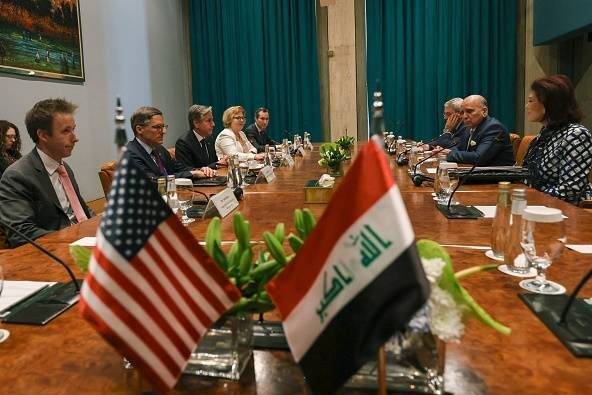By Barbara G.B. Ferguson

Emperor Jahangir Embracing Shah Abbas of Persia. (All images courtesy Freer Gallery of Art)
The sumptuous exhibit at the Smithsonian’s Sackler Gallery in Washington, DC, “Worlds Within Worlds: Imperial Paintings From India and Iran,” marks the first time the lavish manuscripts of the Timurids of Central Asia and Mughals of India have been publicly displayed together.
These great Mughal and Persian paintings are “completely intertwined. The challenge is that we have two incredibly rich traditions and collections,” said the Sackler curators of the exhibit, Drs. Massumeh Farhad and Debra Diamond, during a recent press tour at the museum, located on the National Mall.
“The Mughals were the apogees of sophistication in the Islamic world, and they created an art that was utterly revolutionary and totally Indian and deeply connected to the broader world, including Europe,” said Diamond.
“Each of these Mughal paintings contains a ‘world within a world.’ The central paintings have symbolism and allegory around their borders, which adds dynamism, which is why we called the exhibit: ‘Worlds within Worlds.'”
India’s Mughal rulers (1526-1857) descended from two great ruling lineages, the Timurids and the Mongols. The Timurid were regarded as the epitome of cultural sophistication throughout the Islamic world. Although known as the Mughals—a derivation of the Persian word “Mongol” and the source of the English word mogul—they most proudly claimed descent from the legendary leader Timur (Tamerlane), who died in 1405.
The Mughal Empire extended across India and Persia—today’s Iran—and was led by Muslim rulers descended from Genghis Khan. Their rule linked Persia with India’s Hindu Rajput kingdoms.
“The Mughals affirmed their legitimacy as heirs of the Timurids through artistic, literary, and architectural patronage,” the Sackler curators said. “They avidly collected Timurid manuscripts, paintings and calligraphy, while Persian court artists were given important supervisory roles at the Mughal royal atelier.”
“As Mughal power and influence grew in the 16th century, the emperors sought to create a distinctive culture that drew upon India’s diverse communities, knowledge systems and artistic traditions. The three greatest art patrons—the emperors Akbar, Jahangir and Shah Jahan—encouraged their artists, most of whom were born in India, to create distinctive and intricate paintings rich with color from the Mughal Empire,” explained Diamond as she led the group throughout the exhibit’s four rooms of artwork.

Humayun Seated in a Landscape. (All images courtesy Freer Gallery of Art)
“The Mughal manuscripts and paintings open up worlds within worlds. As visual manifestations of each emperor’s political ambitions, personal interests and ideals of beauty, they delight the mind and astound the eye,” Diamond said.
To showcase their power, influence and wealth, emperors from the 1500s hired painters and writers to make lavish books, known as folios. The works, which took years to complete and could consume every hour of the artists’ lives, served to define the ruler’s legacy as world leaders.
Farhad described these artists as “the Michelangelos and the Rembrandts of the Islamic world.”
A theme that still rings true today is the subtle, or not so subtle, antagonism between emperors who wanted to project themselves as greater than anyone else. In one amusing example, two world leaders are painted together, but one is far superior than his adversary.
The two paintings display Jahangir, whose Persian name means “Conqueror of the World.” His nemesis was Shah Abbas the Great, the shah of Iran, generally considered the greatest ruler of the Safavid dynasty.
Although the two great men are shown together, in reality they never met.
“Jahangir sees himself as cosmopolitan and a world ruler,” noted Diamond, an expert in Indian court paintings, pointing to a painting. “He clearly also has a big ego, as [in] the paintings he has done with both himself and Shah Abbas, he portrays himself as more elegant and better dressed than Shah Abbas.”
In another painting, which Diamond refers to as the “bear hug” painting, Jahangir portrays himself “squishing” Shah Abbas, protecting and portraying himself as being the more powerful figure. Entitled “Emperor Jahangir Embracing Shah Abbas of Persia,” it is clear that not only is Jahangir better dressed, but he is younger, stronger and more vibrant. Clearly, the artwork is powerful imagery, perhaps used as a form of propaganda at the time.
According to the curators, the Jahangir paintings were done during a period of uneasy détente with Shah Abbas. Although in Jahangir’s dream the two rulers embraced, he still wanted to show his superiority—so he had his artist, Abu’l Hasan, cleverly manipulate symbols of sovereignty in the two Jahangir/Abbas paintings. One sees the globe behind the two men, easily viewed as a play on Jahangir’s name, “World Seizer,” which also alludes to his earthy rule. This sets the stage for his duplicitous bear hug of the smaller, less opulently dressed Shah Abbas. No symbolic detail is missed. Beneath the two rulers’ feet, for example, Jahangir’s lion mount looks as though he is nudging Shah Abbas’ lamb out of Persia.
Egos were not in check with these emperors, and each had his own leading painters, calligraphers and illuminators. They were not too modest to have their artists portray them splendidly.

Shah Jahan with Asaf Khan. (All images courtesy Freer Gallery of Art)
Portraits of the fifth Mughal emperor, Shah Jahan, son of Jahangir, best known for commissioning the Taj Mahal, reflect the formality and grandeur of his reign. In one painting, angels—that’s correct, angels—bear the gold Timurid crown studded with rubies and emeralds, emphasizing the magnitude of the emperor’s reign. And, just to cover all his bases, in the same painting three Muslim holy men are further sanctifying his imperial authority.
To his credit, in later life Jahangir allowed artists to portray him “realistically—the opposite of being aggrandized. In one painting he has a saggy chin, sour look, and his paunchy belly,” Diamond pointed out. But historical context is key: the painting depicts Jahangir’s military victory over his son, Shah Jahan, which most certainly explains the sorrowful look on his face.
The paintings of Shah Jahan, whose name means “King of the World,” are not unfamiliar to the eye, as their calligraphy flowers look very similar to those on the Taj Mahal. His portraits depict Shah Jahan as the very embodiment of wealth and power, with border imagery laced in exquisite gold-leaf detail. As with his most famous building project, Jahan used the finest of details to convey his point.
“We wanted to show something fabulous and the interconnections between worlds,” Diamond explained.
The exhibition is among a number of events and shows marking the Sackler Gallery’s 25th anniversary this year, and is the first to highlight the museum’s Persian art collection. It brings together 50 such masterpieces, and remains on view through Sept. 16. For those who miss the exhibit, a beautiful book titled The Imperial Image: Painting for the Mughal Court (2012) is available at the Sackler/Freer Library or online at <www.acsaa.us/news/member-publications/828-book-beachmughacourt>.
Journalist Barbara G.B. Ferguson has covered the Middle East from Washington, London and Pa



